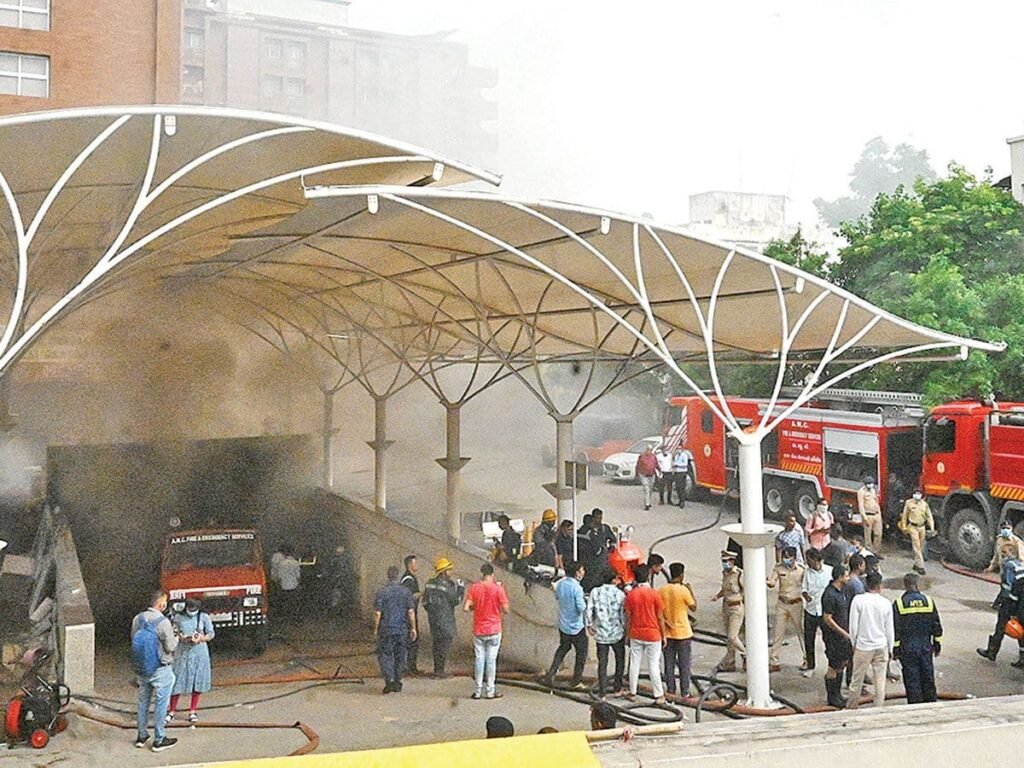In the fast-paced environment of Hospital Fire Safety, patient care and safety are top priorities. While healthcare professionals focus on providing quality treatment, it’s crucial to address potential hazards such as fire safety in hospital. Hospitals house critical equipment, volatile substances, and a large number of people, making them susceptible to fire incidents. In this blog, we will delve into the importance of fire safety in medical facilities, highlighting key measures and protocols to safeguard patients, staff, and infrastructure.
1. Risk Assessment and Planning:
Before addressing fire safety measures, it’s essential to conduct a thorough risk assessment. Hospital Fire Safety should identify potential fire hazards, assess the vulnerability of critical areas, and develop a comprehensive emergency response plan. This plan should include evacuation routes, assembly points, and communication strategies.
2. Staff Training and Drills:
Ensuring that hospital staff are well-trained in fire safety protocols is paramount. Regular drills and training sessions help employees respond swiftly and efficiently in the event of a fire. Staff should be familiar with the location of fire exits, the operation of firefighting equipment, and the importance of remaining calm during emergencies.
3. Fire Prevention Systems:
Investing in advanced fire prevention systems is a proactive approach to Hospital Fire Safety. Installing smoke detectors, sprinkler systems, and fire extinguishers throughout the facility can significantly reduce the risk of fire incidents. Regular maintenance and testing of these systems are crucial to ensure their effectiveness.
4. Electrical Safety Measures:
Given the extensive use of electronic equipment in Hospital Fire Safety, electrical malfunctions pose a significant risk. Hospitals should implement electrical safety measures, including routine inspections, proper wiring, and the use of surge protectors to prevent electrical fires.
5. Patient Evacuation Protocols:
In a hospital setting, patient safety is of utmost importance. Developing and practising patient evacuation protocols ensures a systematic and safe evacuation process. Staff should be trained to assist patients with mobility challenges, and evacuation routes should be designed to accommodate various medical conditions Hospital Fire Safety .
Terrifying Incidents in India
Indian hospitals are vulnerable to mishaps. There have been a number of incidents. A few of them are:
- July 2023, fire broke out in Rajasthan Hospital in Shahibaug area of Ahmedabad. As per the reports, 106 patients were shifted to other hospitals.

- Fire broke out at Salem Government Hospital in Nov 2023. 65 patients were shifted to safety.

Understanding the Fire Risks:
1. Electrical Systems:
Healthcare facilities heavily rely on complex electrical systems to power medical equipment, lighting, and other essential devices. Overloaded circuits, faulty wiring, or malfunctioning electrical equipment can lead to short circuits and fires. Regular inspections and maintenance of electrical systems are crucial to prevent such incidents.
2. Medical Gas Systems:
For Hospital Fire Safety use a variety of gases for medical purposes, such as oxygen and nitrous oxide. Leaks in these systems can create an environment conducive to fires. Proper installation, regular inspections, and staff training on gas safety protocols are essential for preventing accidents related to medical gas systems.
3. Patient Care Areas:
Patient care areas are equipped with various electrical devices, such as life support systems, monitors, and other medical equipment. In the event of a fire, evacuating patients safely becomes a significant challenge. Healthcare facilities must have comprehensive evacuation plans and conduct regular fire drills to ensure the efficient movement of patients and staff during emergencies.
4. Flammable Materials:
Hospitals often store flammable materials, including cleaning supplies, disinfectants, and medical gases. Proper storage and handling of these materials are critical to reduce the risk of fire. Staff training on the proper use of flammable substances and the implementation of safety protocols can help mitigate these risks.
5. Kitchen Facilities:
Hospitals with on-site kitchens face fire risks associated with cooking equipment, grease build-up, and electrical appliances. Regular maintenance of kitchen equipment, implementation of fire suppression systems, and staff training on fire safety in the kitchen are vital components of risk reduction.
Our Distinguished Projects
- At Sankara Hospital, we installed : Fire Hydrant, Fire Alarm, Fire Sprinklers, Pump room. The project Size was 60,000 Sq. Feet. We have multiple projects to our credit.
- At Basavatarakam Indo-American Hospital, we installed : Fire Hydrant, Fire Alarm, Fire Sprinkler, Pump room. The project Size was 1,00,000 Sq. Feet.
We, at Basic Elements, have multiple projects to our credit. We leave no stones unturned when it comes to fire safety solutions. We offer an inclusive approach to fire safety.
Conclusion of Hospital Fire Safety
In the complex and dynamic environment, medical hospitals investing in fire safety not only protects lives but also preserves critical infrastructure, allowing hospitals to continue providing high-quality care to those in need. We, at Basic Elements, are at the forefront when it comes to management solutions.
For More Information visit : Facebook







